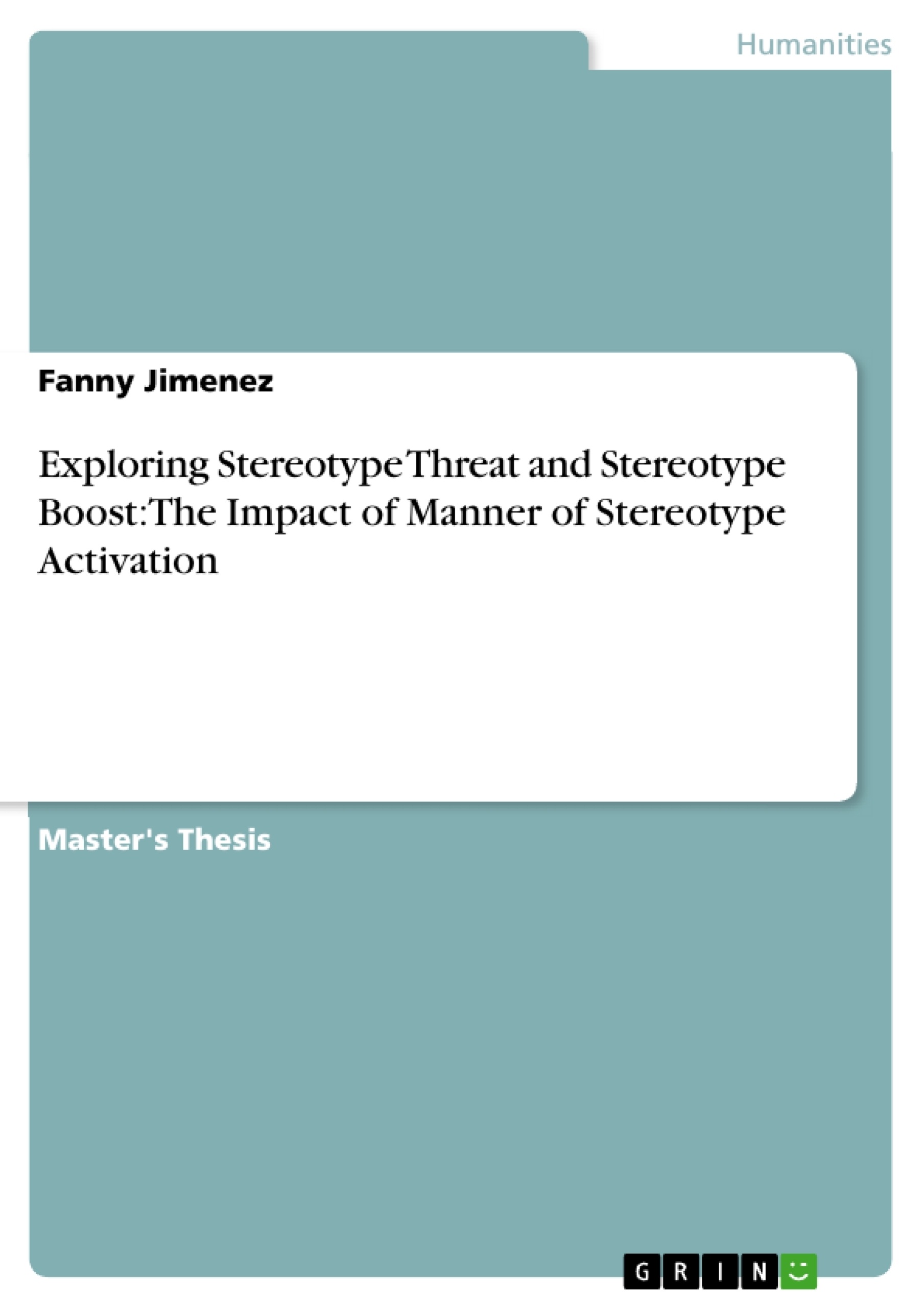The concept of stereotype threat (Steele & Aronson, 1995) has received considerable attention in the past few years. In several studies, Steele and his colleagues took a close look at the influence that negative stereotypes can have on individuals in performance-related situations. As a reaction to the initial concept, the research also extended to other phenomena related to stereotype threat, such as the influence of positive stereotypes in performance-related situations. However, this investigation of the other side of stereotype threat and further studies that have been done regarding stereotype threat in general resulted in contradicting findings. My thesis presents a focused review of the available literature first. This is done to provide a basis for the conceptual framework Shih and colleagues proposed (Shih, Ambady, Richeson, Fujita & Gray, 2002). Their work integrates the conflicting findings and suggests two possible factors that might regulate the effects that positive and negative stereotypes have on people: selfrelevance and the manner of stereotype activation. In my study, I tested this framework in replicating and critically evaluating the study Shih et al. (2002) have conducted. The results and implications for future research are presented.
Table of Contents
- Introduction
- The concept of stereotype threat and stereotype boost
- The role of self-relevance
- The role of manner of stereotype activation
- The study
- Method
- Results
- Discussion
- Conclusion
Objectives and Key Themes
This study aims to investigate the role of self-relevance and manner of stereotype activation in moderating the effects of stereotype boost and stereotype threat. The research aims to replicate and critically evaluate a previous study by Shih et al. (2002), which proposed that these factors regulate the impact of positive and negative stereotypes on individuals' performance. This study focuses on examining the interaction between prime content (positive stereotype vs. no stereotype) and prime type (blatant vs. subtle) on participants' math performance.
- Stereotype threat and stereotype boost
- Self-relevance and its influence on stereotype activation
- The impact of manner of stereotype activation (blatant vs. subtle)
- The interaction of prime content and prime type on performance
- Gender differences in response to stereotype activation
Chapter Summaries
The introduction provides an overview of the concept of stereotype threat and stereotype boost, exploring the influence of negative and positive stereotypes on individuals' performance. It highlights the contradicting findings in research and introduces the framework proposed by Shih et al. (2002) regarding the role of self-relevance and manner of stereotype activation in regulating these effects. The chapter outlines the objectives of the study, which aims to replicate and critically evaluate the previous research.
The method section details the design and procedure of the study. It describes the participants, the experimental design, the stereotype priming techniques used (blatant vs. subtle), and the math test administered to assess performance. The results section presents the findings of the study, highlighting the significant interaction between prime content and prime type on participants' math scores. The discussion chapter interprets the findings, relating them to the existing literature on stereotype threat and stereotype boost. It explores the implications of the study for understanding the role of self-relevance and manner of stereotype activation in influencing individuals' performance.
Keywords
This study centers on the concepts of stereotype threat, stereotype boost, self-relevance, manner of stereotype activation, positive stereotypes, negative stereotypes, performance, and the influence of these factors on cognitive performance. The study also focuses on the role of gender and its potential moderating effects on the impact of stereotype activation.
- Quote paper
- Fanny Jimenez (Author), 2005, Exploring Stereotype Threat and Stereotype Boost: The Impact of Manner of Stereotype Activation, Munich, GRIN Verlag, https://www.grin.com/document/61288




